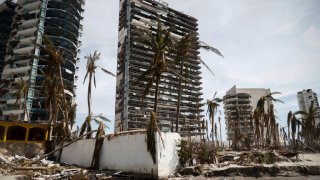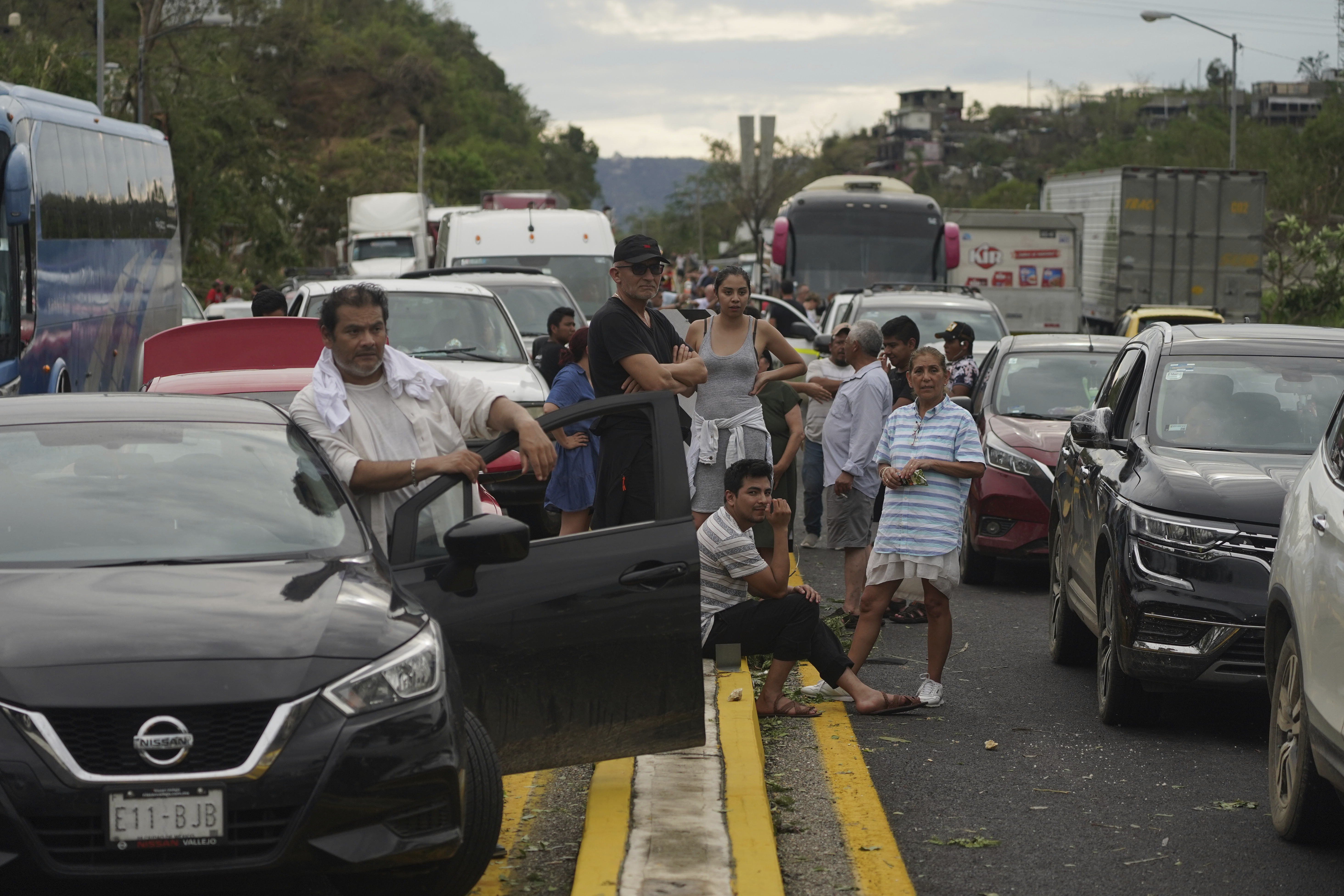
At least 48 people died when Category 5 Hurricane Otis slammed into Mexico’s southern Pacific coast, most of them in Acapulco, Mexican authorities said Sunday as the death toll continued to climb and families buried loved ones.
Mexico's civil defense agency said in a statement that 43 of the dead were in the resort city of Acapulco and five in nearby Coyuca de Benitez. Guerrero state's governor had earlier raised the number of missing to 36 from 10 a day earlier. The death toll increased after authorities had raised it to 39 on Saturday.
In Acapulco, families held funerals for the dead on Sunday and continued the search for essentials while government workers and volunteers cleared streets clogged with muck and debris from the powerful Category 5 hurricane.
Kathy Barrera, 30, said Sunday that her aunt’s family was buried under a landslide when tons of mud and rock tumbled down onto their home. Her aunt's body was found with the remains of their three children ranging in age from 2 to 21. Her uncle was still missing. Separately, Barrera’s own mother and brother also remained missing.
Get Connecticut local news, weather forecasts and entertainment stories to your inbox. Sign up for NBC Connecticut newsletters.
“The water came in with the rocks, the mud and totally buried them,” Barrera, who was standing outside a local morgue, said of her aunt's family.
On Sunday, authorities released the bodies of her aunt and the two youngest children to relatives. Bodies in white bags were loaded into open caskets in the back of hearses. The eldest daughter had already been buried the day before.
As she prepared to lay her relatives to rest, Barrera — who had hardly even had a chance to search for her own mother and brother — expressed desperation and frustration at the aid and personnel she had begun seeing in tourist areas of the city — but not in their neighborhood high on a mountainside hit by landslides.
“There are many, many people here at the (morgue) that are entire families, families of six, families of four, even eight people,” she said. “I want to ask authorities not to lie … there are a lot of people who are arriving dead.”
During a short time outside the morgue Sunday morning, at least a half-dozen families arrived, some looking for relatives; other identifying bodies and still others giving statements to authorities.
The somber convoys of hearses and relatives crossed much of battered Acapulco en route to the cemetery, passing ransacked stores, streets strewn with debris and soldiers cutting away fallen trees.
President Andrés Manuel López Obrador said Saturday that his opponents are trying to inflate the toll to damage him politically, but with hundreds of families still awaiting word from loved ones it was likely to keep rising.
Otis roared ashore early Wednesday with devastating 165 mph (266 kph) winds after strengthening so rapidly that people had little time to prepare.
Kristian Vera stood on an Acapulco beach Saturday looking out toward dozens of sunken boats, including three of her own, all marked by floating buoys or just poking out of the water.
Despite losing her livelihood in Otis’ brutal assault on the coast, she felt fortunate. Earlier in the day, she watched a body pulled from the water and saw families coming and going, looking for their loved ones.
Many people rode out on boats what had started as a tropical storm and in just 12 hours powered up into a catastrophic Category 5 hurricane.
Leaning against a small wooden fishing boat like her own, tipped on its side on a beach strewn with trash and fallen trees, she explained that some of the people who died were either fishermen caring for their boats or yacht captains who were told by their owners to make sure their boats were OK when Otis was approaching as a tropical storm.
“That night I was so worried because I live off of this, it’s how I feed my kids,” Vera said. “But when I began to feel how strong the wind was, I said, ‘Tomorrow I won’t have a boat, but God willing, Acapulco will see another day.’”
Military personnel and volunteers worked along Acapulco’s main tourist strip Saturday and Salgado announced Sunday that the boulevard had been cleared of debris.
Salgado also said that the national electric company reported restoring power to 58% of homes and businesses in Acapulco and 21 water tankers were distributing water to outlying neighborhoods.
But on the city's periphery, neighborhoods remained in ruins.
Aid has been slow to arrive. The storm’s destruction cut off the city of nearly 1 million people for the first day, and because Otis had intensified so quickly on Tuesday little to nothing had been staged in advance.
The military presence swelled to 15,000 in the area. López Obrador had called on the armed forces to set up checkpoints in the city to deter looting and robbery.
The federal civil defense agency tallied 220,000 homes that were damaged by the storm, he said.
___
Associated Press writer Fabiola Sánchez in Mexico City contributed to this report.



